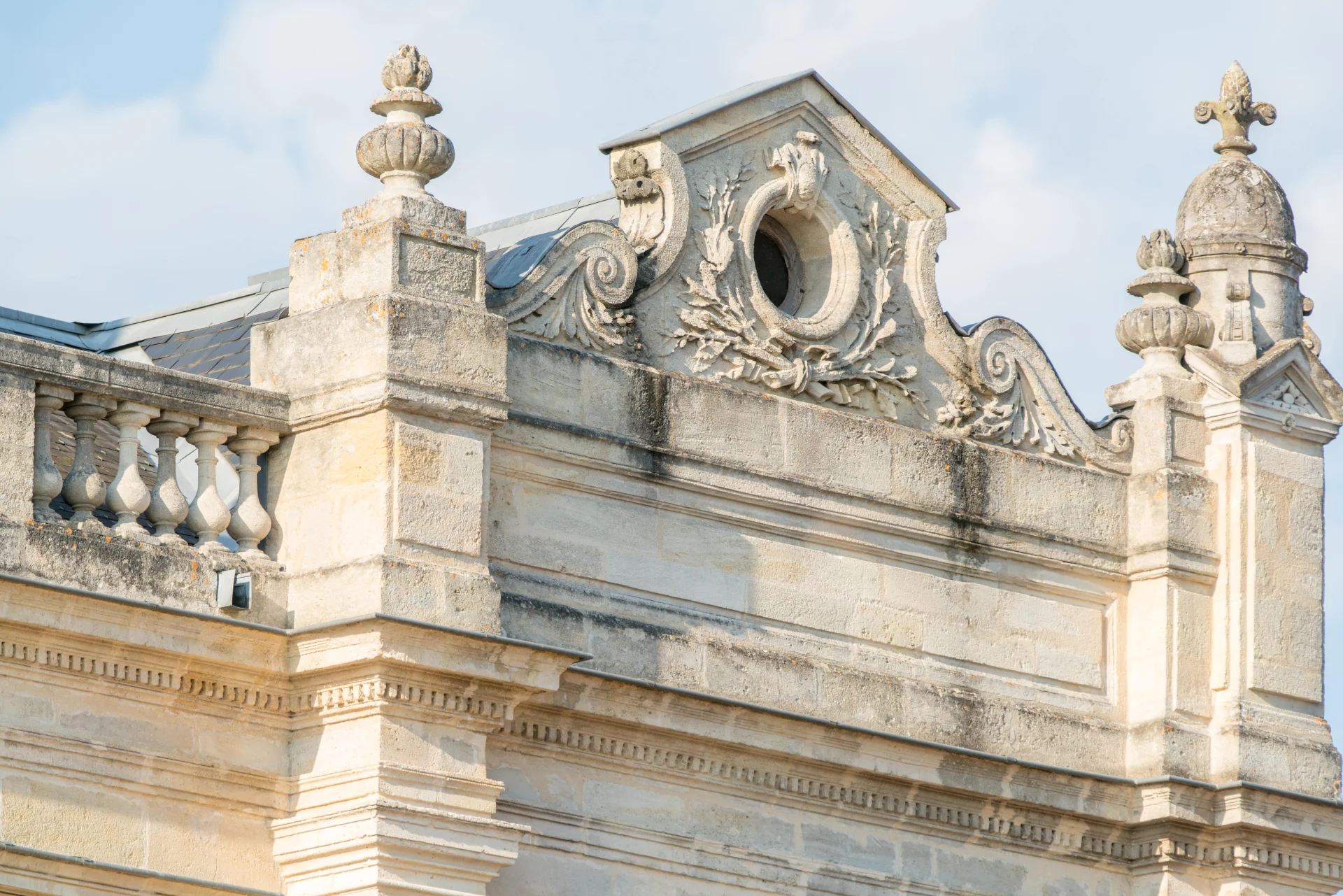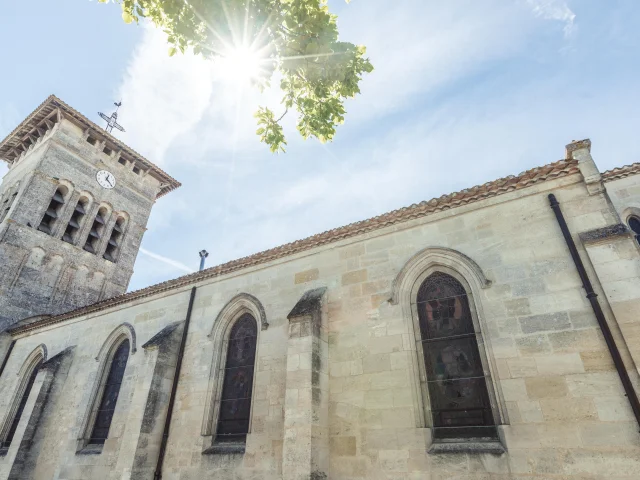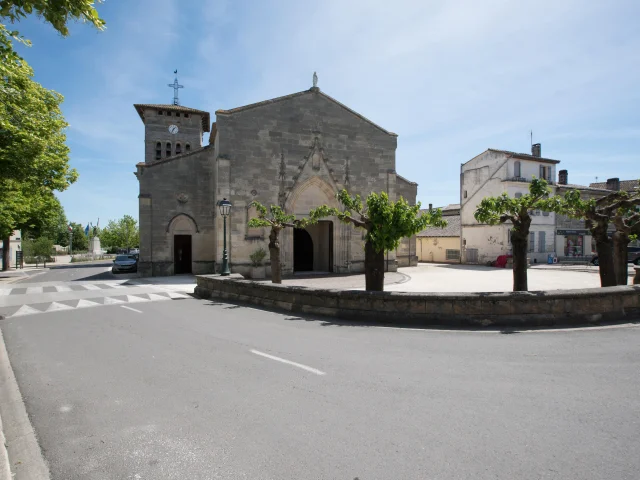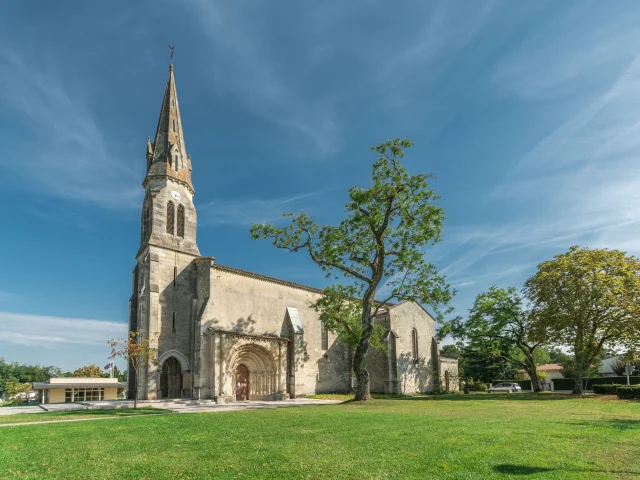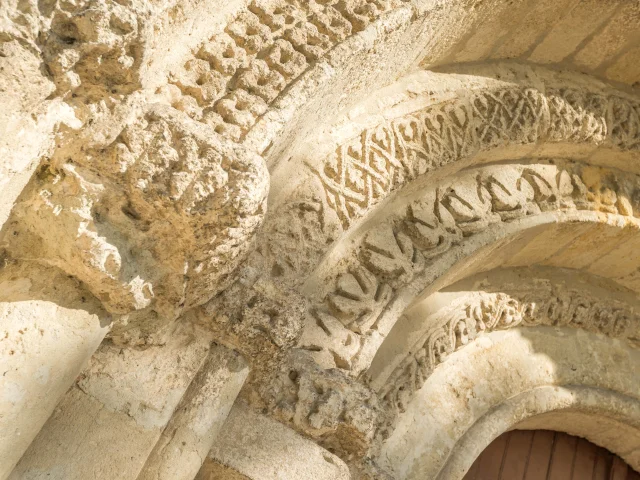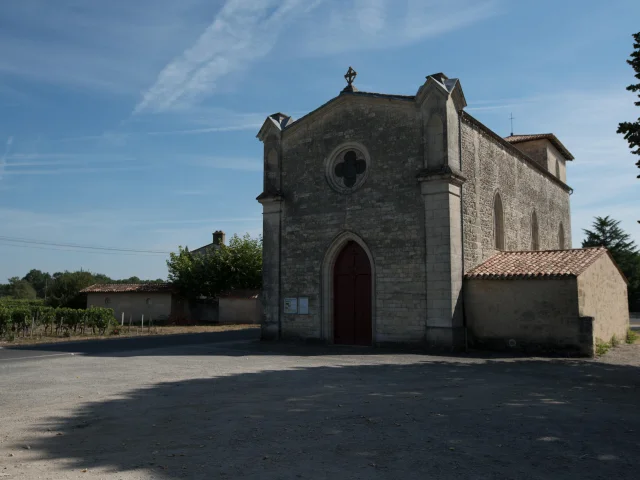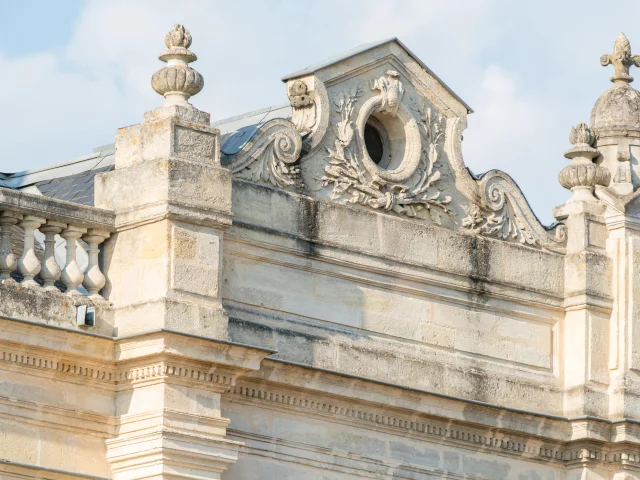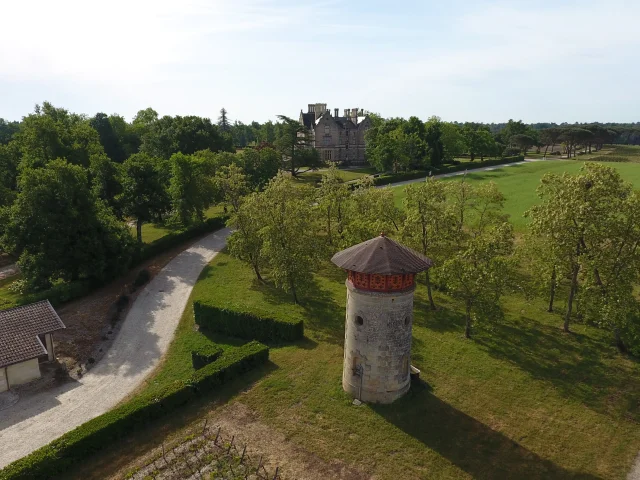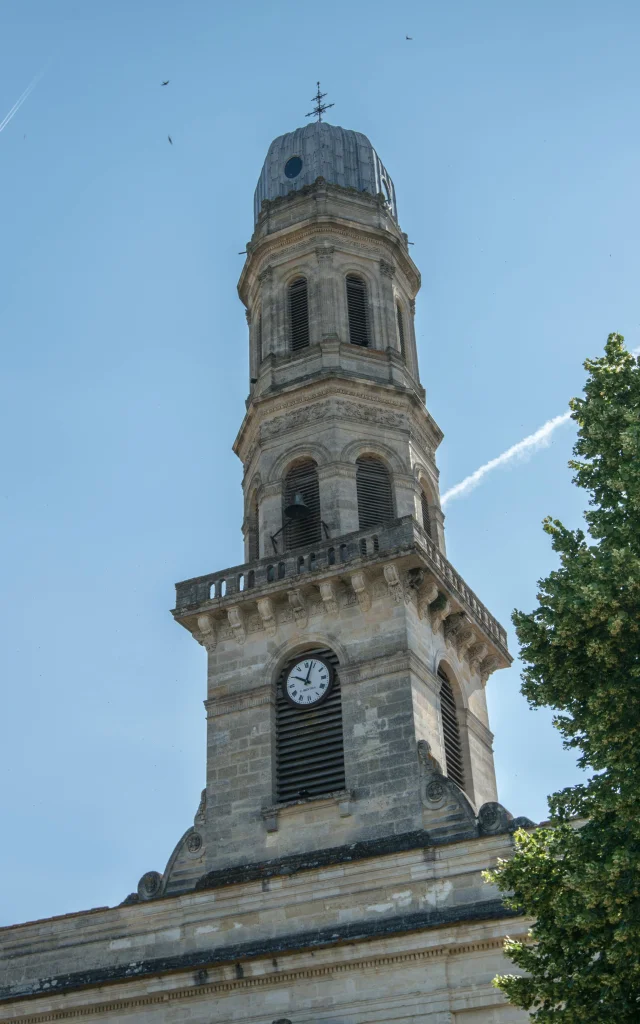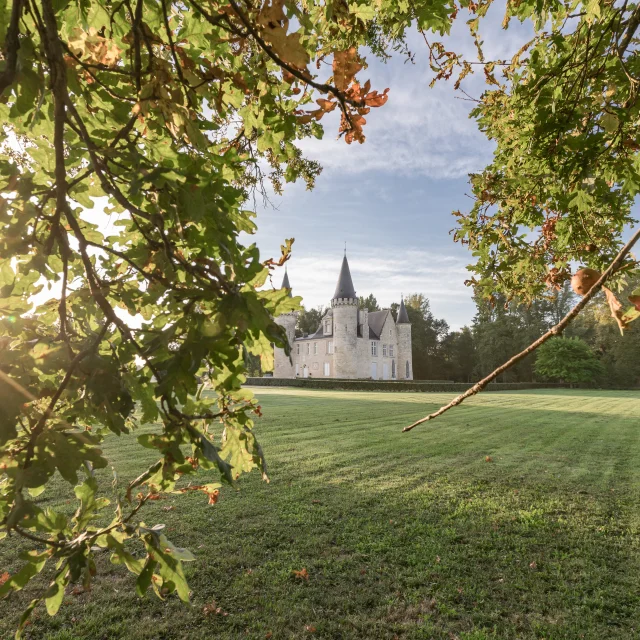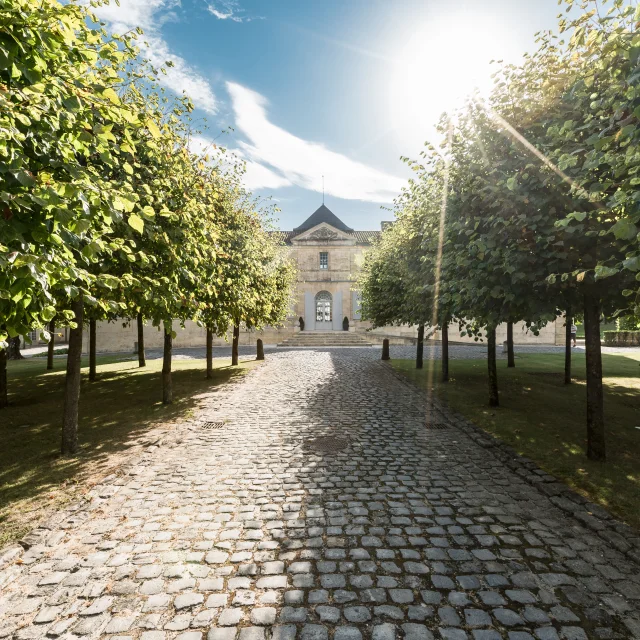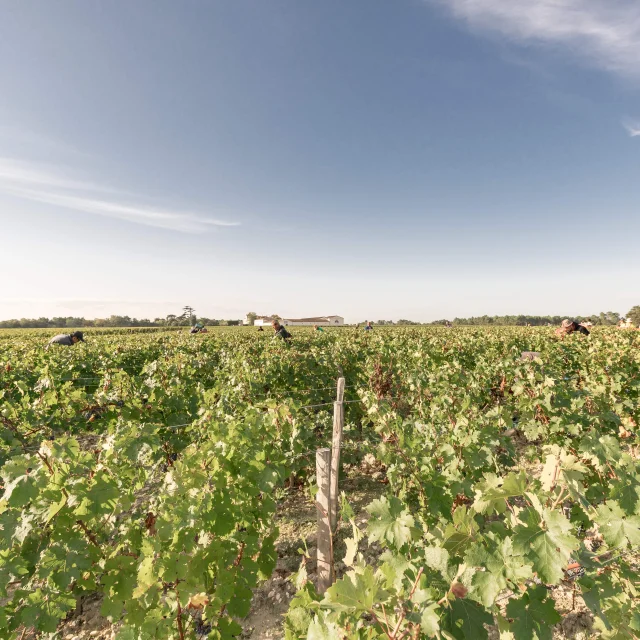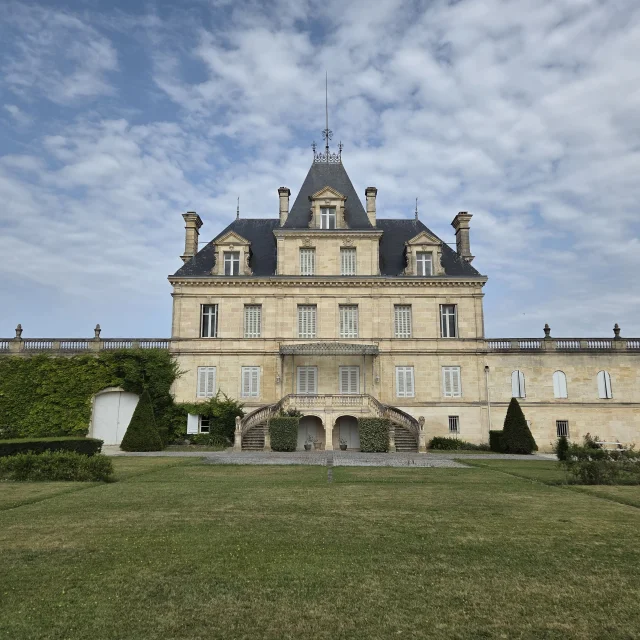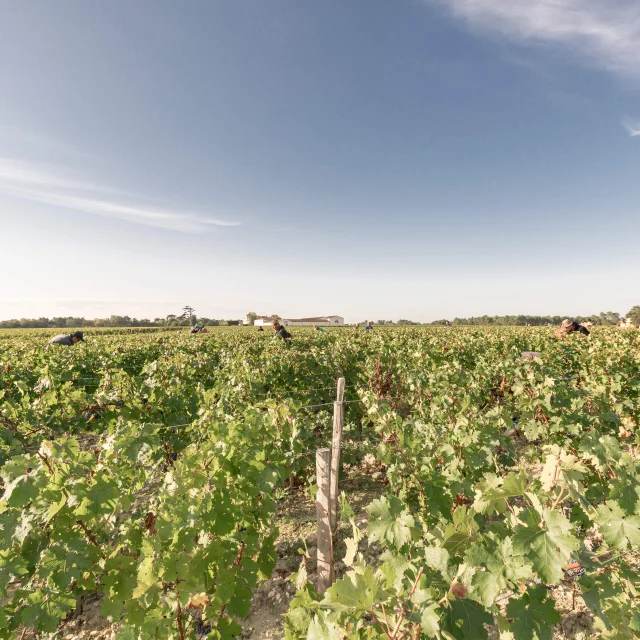The churches :architecture of yesteryear
In the Médoc, churches are places of peace, meditation and remembrance. Imposing or modest, they mark the landscape like sentinels of local history. These buildings have survived the centuries and, even if they are not listed, they continue to seduce with their authenticity and the aura of serenity they exude.
- Church of Saint-Seurin in Lamarque
The church of Saint-Seurin in Lamarque, dating from the 11th century, is a heritage treasure. Its reconstruction in 1674 and extension using stones from the previous church reflect a rich history. The current church, rebuilt in the 1830s, is distinguished by its majestic bell tower-porch. The latter, topped by a zinc dome, houses an observatory with a panoramic view. Inside, the dome enchants with canvases depicting the Evangelists and an apse vault adorned with golden bees.
- Church of Saint-Didier in Cantenac
The church of Saint-Didier in Cantenac, rebuilt from 1769, stands out for its atypical architecture in the Médoc. Listed as a Monuments historiques, it offers a remarkable example of the Baroque style, with a triangular pediment facade and a neo-classical bell tower. The interior is decorated in an Italianate style, with period features including a marble holy water font and 18th-century paintings.
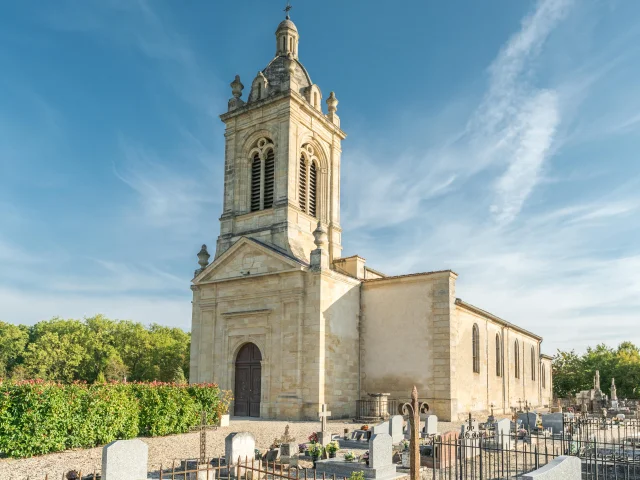 Church of Margaux Cantenac
Church of Margaux Cantenac